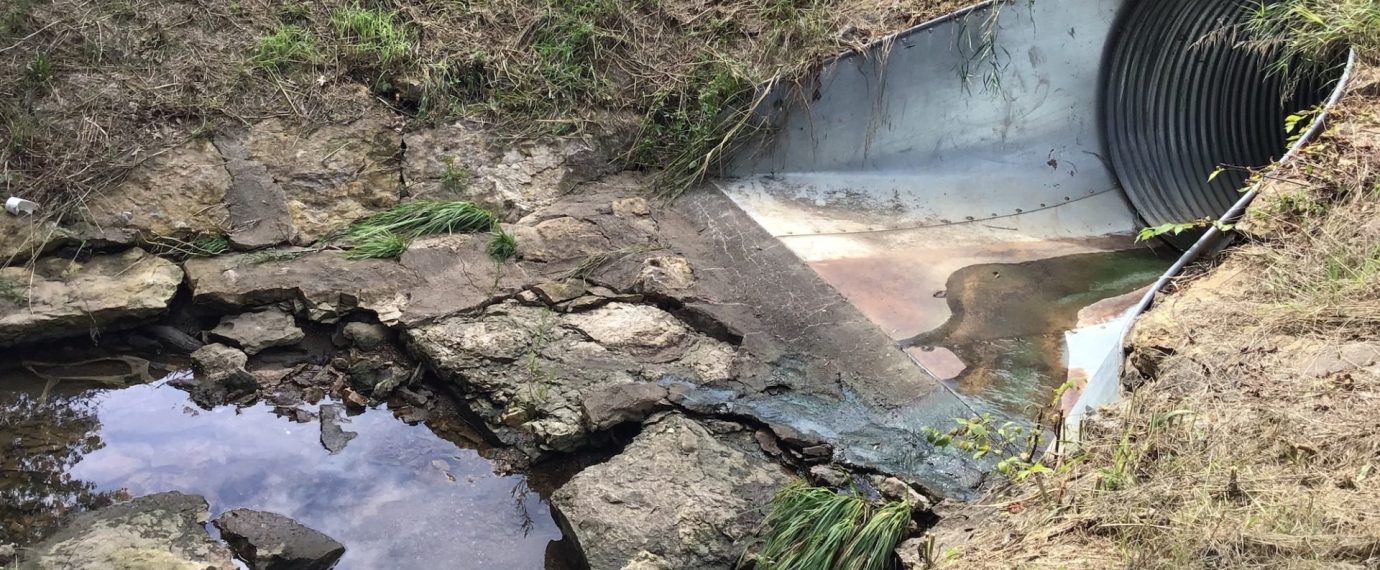Industrial facilities with stormwater permit coverage typically must conduct periodic stormwater sampling during a rain event. The most common type of stormwater permit for industrial activities is a Multi-Sector General Stormwater Permit (MSGP). The stormwater sampling parameters and frequency are often state-specific and dependent on the type of industrial activity occurring onsite. State MSGPs require stormwater sampling to determine the water quality of the stormwater leaving the site and reflect the effectiveness of best management practices (BMPs). These BMPs are requirements mandated by the EPA to prevent stormwater pollution in the final body of water receiving the site’s stormwater runoff.
Sampling Collection and Location
A stormwater sample must be collected during a qualifying storm event (QSE). According to the EPA (40 CFR 122.21), a QSE is a rainfall event with greater than 0.1 inches of rainfall that takes place at least 72 hours from the previous measurable rain event. QSE classifications can be state-specific but are often classified using 40 CFR 122.21.
Stormwater samples are most commonly collected at points where rainwater leaves the facility’s property. These points are called outfalls (discharge locations) and collect stormwater from a drainage area, which is comprised of outdoor industrial activity and/or material. Common outfalls include ditches, swales adjacent to roadways, storm drains, culverts, retention ponds, and sometimes erosion patterns leading offsite. If a sampling location isn’t safe to sample from or isn’t reachable, an alternate location upstream or downstream may be warranted. In some cases, sampling locations are simply a location where sheet flow exits the property.
At a facility, samples should be collected from all outfalls that receive runoff from an industrial drainage area. If two outfalls have similar industrial activity occurring within their drainage area, they can often be classified as substantially similar or identical. If two outfalls are substantially similar, sampling only needs to occur at one of them.
Sampling Parameters and Frequency
Sampling parameters depend on a facility’s Standard Industrial Classification (SIC) code (i.e. the type of industrial activity occurring onsite), state-specific benchmark limits, and the receipt of water impairment. All these details should be reviewed to determine sampling applicability:
- SIC Code – A facility’s SIC code is often used to determine benchmark limits. General stormwater permits will typically assign subsectors (e.g. Chemical Manufacturing, Metals Manufacturing, etc.) to facilities based on their SIC code. From these subsectors, further benchmark limits can be established. Certain subsectors may not require sampling.
- Benchmark Limits – These are derived from the state-specific or federal MSGP requirements, which are either applicable to all facilities with coverage or are SIC code-specific.
- Impaired Water Requirements – Facilities that discharge to an impaired water body typically will have more stringent sampling requirements if they have the potential to discharge a pollutant in which the water is impaired by. If the impaired water has a Total Maximum Daily Load (TMDL), the facility is often required to follow the associated BMPs and quantifiable discharge limits.
Sample collection frequency is dependent on the state’s stormwater permit requirements; frequency typically ranges between annual and quarterly. Commonly sampled analytes include Total Suspended Solids (TSS), pH, oil and grease, and metals (zinc, copper, iron, etc.). In lieu of analytical sampling, some states implement visual monitoring of stormwater for pollutants. Visual monitoring may take place for clarity, floatable solids, foam, and oil sheens.
Common Pitfalls and Solutions
Collecting a stormwater sample from a QSE in a timely and sufficient manner is a consistent challenge that facilities face. Sampling logistics, procedures, and timing can be overwhelming. Common pitfalls facilities face when attempting to collect a stormwater sample include:
- Missed Sampling Opportunity – Facilities often miss a sampling opportunity due to oversight or trained sampling personnel not being available. To mitigate missed sampling opportunities, ensure a sampling kit is onsite at the beginning of the monitoring period. Plan ahead, review weather forecasts and mark dates on the calendar as reminders to sample in case of rain. Additionally, facilities should consider assigning a second employee with sampling responsibilities in case the designated sample collector is unavailable.
- Sample Outside Shipping Temperature – Sampling kits received by analytical labs that are not within the temperature limits (0-6°C or 32-43°F) will be unrepresentative, and a recommendation to resample will be issued. To mitigate temperature non-conformance, the sampling kit should be packed so it is at least 1/3 full of ice. Once collected, samples should be pre-chilled in an ice bath prior to shipping. This reduces ice melting in transit. To further prevent ice melt, only natural ice should be used and it should be bagged to prevent water from leaking in the cooler. The cooler should be lined with a garbage bag to prevent further leaking in transit.
- Sample Outside Holding Time – Each sample bottle in the kit will be parameter-specific and have designated holding time requirements. Holding time is the amount of time from collection that a sample has until it needs to be analyzed. If a holding time is not met, the samples will become unrepresentative. To meet the holding time, samples should be shipped overnight and should arrive at the lab during operating hours. If your lab is closed on Saturdays, do not ship the samples on a Friday.
- Sampling Bottle Breaking in Transit – Improperly packaged sampling bottles have the potential to break or spill during delivery if not adequately packaged. To mitigate bottles breaking or spilling, the glass bottles should be individually bubble wrapped. Bottles should not be stacked or placed on their sides. Additionally, each bottle should be placed in a zip-lock bag. This prevents labels from becoming saturated and peeling off from ice melt. Bubble bags are the ideal packing material. When ready to ship, the sampling kit (cooler) should be taped multiple times with the tape going completely around the cooler.
- Improper Sampling Techniques – During the sample collection process, dirt, debris, and other non-stormwater material can contaminate sample bottles. This macroscopic material makes the sample non-representative of what is actually in the runoff. To prevent your stormwater sample from having excess material, use a separate bottle to collect the sample, visually inspect the stormwater for sediment, and, if clean, pour the sample in the sampling kit bottle.
- No QSE During Reporting Period – When no rainfall occurs during a reporting period, the covered facility can typically report “No-Flow” instead of submitting their stormwater analytical results. The state department may review local rain gauges to confirm that no QSE had occurred during regular business hours for the facility.
- Sheet Flow Collection – Sheet flow is commonly defined as stormwater runoff across a flat paved surface. If there aren’t any ideal outfalls onsite, a facility will have to collect from sheet flow exiting the site. Using sampling kit bottles to collect sheet flow is not feasible, so the stormwater needs to be collected in a different manner before being poured into bottles. For instance, a clean dustpan is a great way to collect sheet flow during heavy rain. For additional techniques, please refer to the instruction video links at the end of the article.
Conclusion
Every state’s stormwater sampling and monitoring requirements are slightly different. That said, if your facility has MSGP coverage, you may be required to conduct periodic stormwater sampling and/or pollutant monitoring. For determining applicability, review your permit’s benchmark limits, subsector effluent limitations, and receiving water TMDL requirements. In summary, to avoid the pitfalls of stormwater sampling, please use the following recommendations:
- Review and understand your permit’s stormwater sampling requirements
- Review weather forecasts, plan ahead and designate an alternate sample collector
- Ensure sampling kits are packed with as much ice as possible (1/3 of cooler minimum)
- Ship samples overnight and make sure they arrive during lab operating days
- Use proper packaging techniques when shipping
- Try not to “scoop up” sediment when collecting a stormwater sample
- If there wasn’t a qualifying storm event, file a “No-Flow” report even though sampling did not occur
- Ensure you know where to collect a sample and the procedures involved
Additional Resources
WA Stormwater Sampling Techniques – https://www.youtube.com/watch?v=9jOArnpBZpU
Collecting a Grab Sample (MPCA) – https://www.youtube.com/watch?v=oWKdonc9iDw
Collecting a Sheet Flow Sample (MPCA) – https://www.youtube.com/watch?v=AmEJUNp44aU



